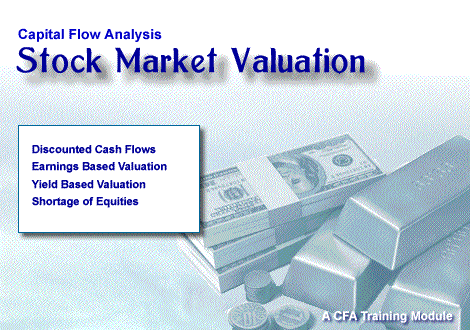Stock Valuation and Equity Values in the Stock Market

 Stock Valuation in the Stock Market
Stock Valuation in the Stock Market
Equity Values and Capital Flows
Perception of the value of securities is central to explaining capital market supply and demand.
Varying theories of value explain motivation of different categories of issuers, investors, and intermediaries.
Three notions of stock value are of interest in Capital Flow Analysis:
- Market Value: The price at which a security may be bought or sold in a public market.
- Intrinsic Value: The worth of a security as an investment, based on the issuer's capacity to return value to investors.
- Speculative Value: The market price of a security relative to the price at which the buyers hope to sell the security in the future.
This learning module focuses on equity values: evolving and divergent perceptions of the worth of corporate stocks are important in explaining capital market supply and demand.
Training Module Reading Time:
31 to 49 minutes (6.900 words, 6 pages).

1: Yield-Based ValuationUntil 1970, stocks were valued primarily in terms of their current dividends, as compared to yields on bonds. For over a century, dividend yields were typically 120% of bond yields. This rich return was the basis for the Common Stock Legend. |
|
2: Earnings-based ValuationFor generations , investors have been willing to pay from ten and twenty times earnings for U.S. equities. Divergence from the long-time average of fifteen times earnings signals under- or over-pricing of stocks. The predictive value of the 10-20 price-earnings rule has held up well for over a hundred years, until the late 1990s. |
|
3: Discounted Cash FlowClaims that high stock prices are justified by fast growing corporate profits are belied by the facts. An index based on the discounted cash flow of corporate dividends and normal profit growth shows that stocks were over-priced during the Great Bubble. |
|
4: Scarcity of SupplyBear and bull markets are often caused by a shortage or excess supply of equities. Total corporate profits and average long-term price-earnings ratios can be used to measure the degree of this imbalance. |




